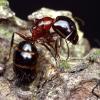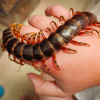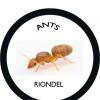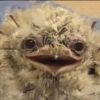CLICK ON PICTURES FOR FULL SIZE IMAGES
After having three of my colonies die over winter I decided to get two new ones - a Lasius Flavus direct replacement queen and something new, but European with a hibernation cycle. I read about Temnothorax Nylanderi and several people were saying they were timid or ran from other ants. That made me wonder if they could share my planned outworld with the Lasius Flavus and Prenolepis Nitens? Probably not, but it's something interesting to aim for  Additionally if my Prenolepis Nitens queen does die, I'll have a back up for sharing with my Flavus.
Additionally if my Prenolepis Nitens queen does die, I'll have a back up for sharing with my Flavus.
28th April
I chose the most uninventive name (Acorn colony) because they actually came in an acorn, which is brilliant! I had ordered a queen with 5-10 workers, so it was great to see a couple climbing around outside the acorn when I had a look at them in the light. They are about the same size as Lasuis Niger and a beautiful colour:
My new (and probably much better) way of starting off queens and small colonies is to keep them in their original test tube and just connect a new one with additional water and food. That way I can potentially swap the food and water if needed without disturbing the colony and the colony can also move if they chose to or water in the original test tube gets too low.
I put some honey, marmite, sugar and a fruit fly in the test tube and it was exciting to see after about half an hour that two workers ventured in to explore:
A third one joined them and they all went for the honey:
A couple more workers came out, one trying the marmite (on the left) and another having a go at the fruitfly (to the right). At this point I suspected that I might have more than 10 workers, with 5 having ventured out so quickly:
Then things got wild 

At their peak the colony had 23 workers out that I could see and they spent about 3-4 hours just gorging themselves on honey. Their gasters got noticably bigger, going from a rounded shape to a pointed shape and elogating the most at the end. A couple had some of the protein in the marmite and fruitfly, but as you can see above, honey was by far the favourite. It was amazing to see this as none of my other colonies is at this size and able to swarm like this. After a few hours the numbers dropped to 3-4 feeding outside the acorn.
It's a bit of a shame that I can't see how the lavave and pupae will be growing, but it's exciting to have a colony that is so large and developed. Looking forward to trying it with new foods 
Edited by Dreamer, April 28 2018 - 3:46 PM.
































